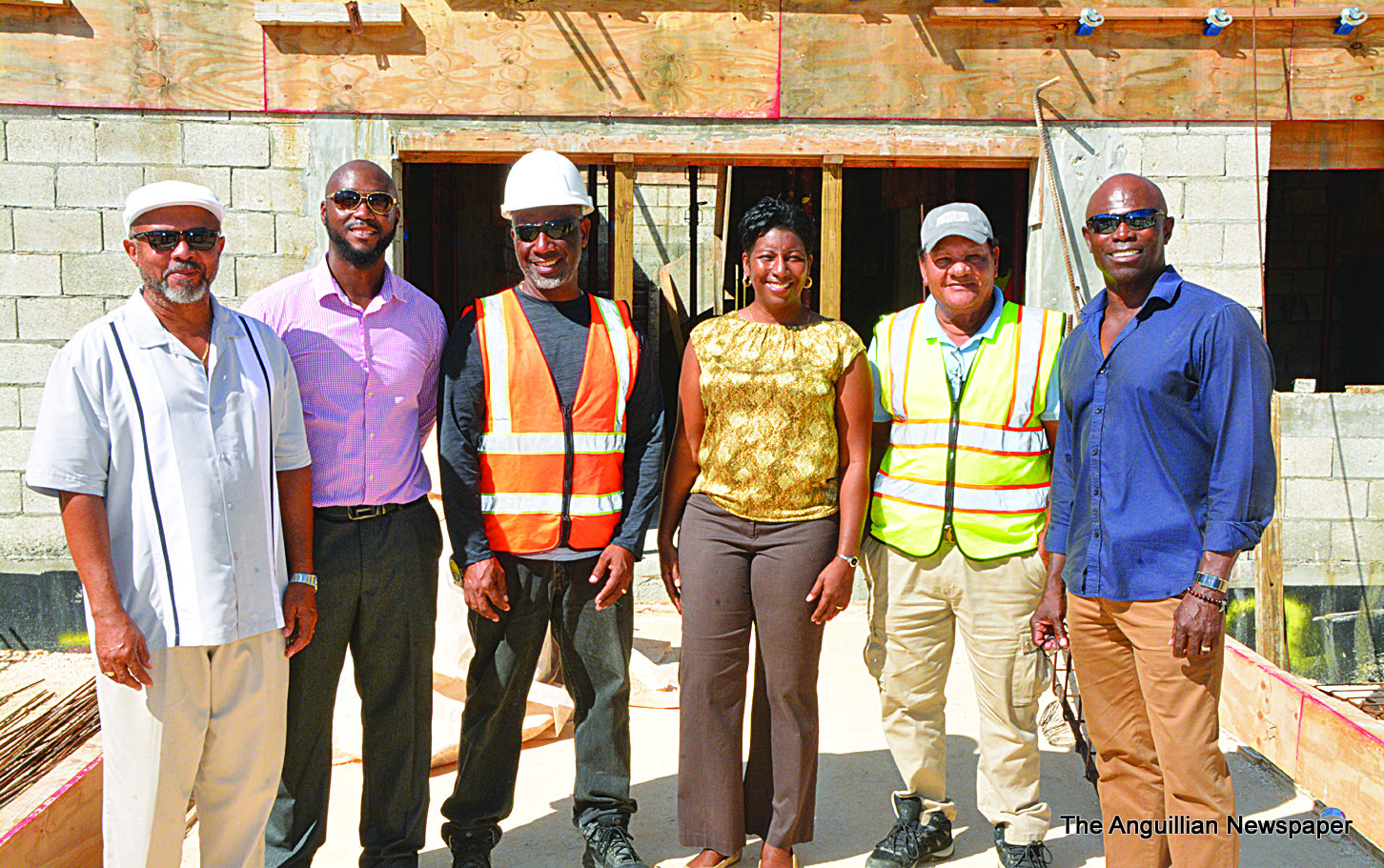Anguilla United Front Opposition members are now fully acquainted with the education projects on the island financed under the UK Government-funded Anguilla Programme.
This followed a tour which they had last week of the Adrian T. Hazell Primary School, The Valley Primary School, the Orealia Kelly Primary School, the Morris Vanterpool Primary School and the Albena Lake-Hodge Comprehensive School. All of the primary school projects are more or less at an advanced stage of construction as a result of the steady and exceptionally good work by Anguillian contractors.
The Albena Lake-Hodge Comprehensive School, which is still quite a distance away from completion, is the largest of the projects, accounting for some 25 million US dollars. It is a gigantic structure with a cluster of various classroom buildings and supporting facilities on some 17.5 acres of land, north of The Quarter main road.
The touring party comprised the former Minister of Education and Home Affairs, now Leader of the Opposition, Mrs. Cora Richardson-Hodge; former Minister of Social Development, Health and Lands, Mr. Evans Rogers; former Parliamentary Secretary, Tourism, Youth Affairs and Culture, Mr. Cardigan Connor; and the AUF’s Island-wide Elected Representative, Mr. Jose Vanterpool.
The work at the Comprehensive School project is being built by some three local contractors (while a fourth was earlier advertised for). A considerably lengthy part of the tour was spent on the construction area where there is a partnership involving Mr. Cuthwin Webster, Mr. James Ruan and Mr. Glenville Hodge. There, Mr. Cuthwin stated that the work, though in full swing, was being held up by delays involving materials, communication with and approvals by the project designers in Barbados. He indicated that, as a result of various issues, he and his colleagues were obliged to obtain a Project Manager, Mr. Cleve Hodge, an Architect involved in other Anguilla Programme projects.
Speaking about the long-distance contacts with Barbados and the delays, Mr. Webster told the touring party and media representatives: “Cleve has taken up the mantle to make life a little easier for me. Without him, I don’t know where the hell I would be. As you can see, we started from way down there and we are now up here – and there are still hiccups, hiccups.”

Mr. Richards replied: “Nothing works perfect with any project. With a project of this magnitude and diversity, there are a lot of issues from design to site conditions, to availability of materials, and to the proper materials. For example, when we build a home in Anguilla, we buy steel and put it in our house. We don’t figure out what grade it is. Here, you have to get mill certificates to ensure that the grade of the steel is correct. For every single detail of steel work, there is an inspector who looks at it, in addition to the Building Inspector, to make sure it conforms. If you have a bar of steel off by half an inch, it must be corrected. These are public buildings and you have to ensure that they can outlast generations. We have to do it by the book, so any modifications here must be approved by Barbados as simple as it is. Sometimes we are upset because it takes too long to do – and slows us down on the project but, eventually, we will get there.”
Meanwhile, on the western side of the sprawling project, there is a solid rock-bound area which is earmarked for an athletic track. It was perceived, by the current Ministry of Education, that the area does not augur well for a professional athletic track which would have to be constructed elsewhere on flat land.
Mr. Webster pointed out, however, that the rocky area was not a problem for his construction company. “Whatever has to be done on the site, we have the equipment to do it,” he asserted.
Mrs. Richardson-Hodge explained the situation as she knew it as the former Minister of Education: “We designed it not for an international track, which requires more space, but for a track for the purposes of the high school. There was a back and forth situation on the matter with Planning, but it was a track for our local children. That is why Planning eventually approved the design as it was, and so the land is sufficient for the purposes of the high school.”
It was mentioned during a tour by the present Ministers of the Anguilla Government, a few weeks ago, that, despite the large size of the project, there was a need for several additional classrooms; and that, as a result, the present shift system at the Comprehensive School would be continued until more funds were available for the extra classrooms. Mrs. Richardson-Hodge, the former Minister of Education, was unable to comment as she, now being out of office, was not privy to the matter.










